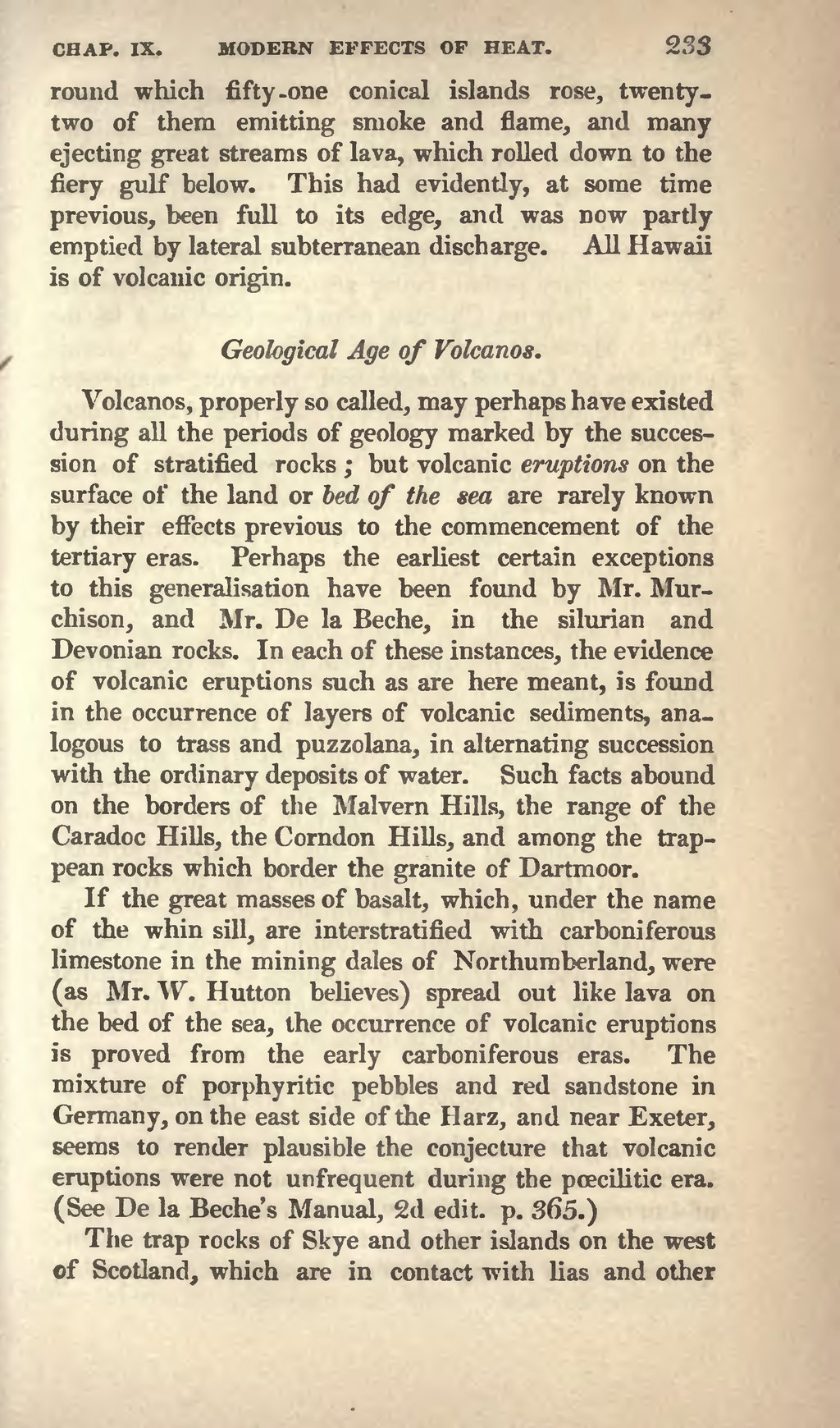round which fifty -one conical islands rose, twenty two of them emitting smoke and flame, and many ejecting great streams of lava, which rolled down to the fiery gulf below. This had evidently, at some time previous, been full to its edge, and was now partly emptied by lateral subterranean discharge. All Hawaii is of volcanic origin.
Geological Age of Volcanos.
Volcanos, properly so called, may perhaps have existed during all the periods of geology marked by the succession of stratified rocks; but volcanic eruptions on the surface of the land or bed of the sea are rarely known by their effects previous to the commencement of the tertiary eras. Perhaps the earliest certain exceptions to this generalisation have been found by Mr. Murchison, and Mr. De la Beche, in the silurian and Devonian rocks. In each of these instances, the evidence of volcanic eruptions such as are here meant, is found in the occurrence of layers of volcanic sediments, analogous to trass and puzzolana, in alternating succession with the ordinary deposits of water. Such facts abound on the borders of the Malvern Hills, the range of the Caradoc Hills, the Corndon Hills, and among the trappean rocks which border the granite of Dartmoor.
If the great masses of basalt, which, under the name of the whin sill, are interstratified with carboniferous limestone in the mining dales of Northumberland, were (as Mr. W. Hutton believes) spread out like lava on the bed of the sea, the occurrence of volcanic eruptions is proved from the early carboniferous eras. The mixture of porphyritic pebbles and red sandstone in Germany, on the east side of the Harz, and near Exeter, seems to render plausible the conjecture that volcanic eruptions were not infrequent during the pœcilitic era. (See De la Beche s Manual, 2d edit. p. 365.)
The trap rocks of Skye and other islands on the west of Scotland, which are in contact with lias and other
